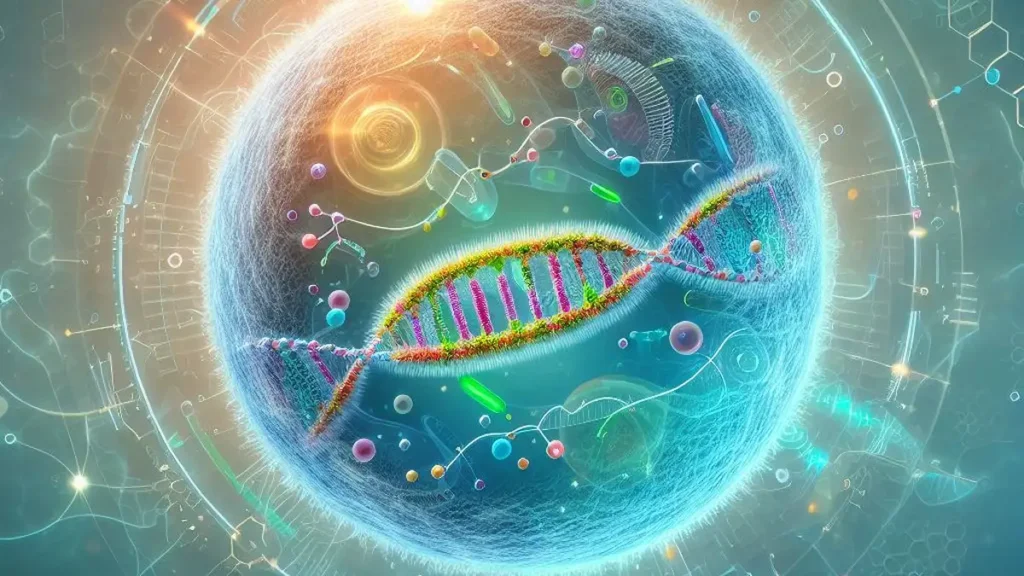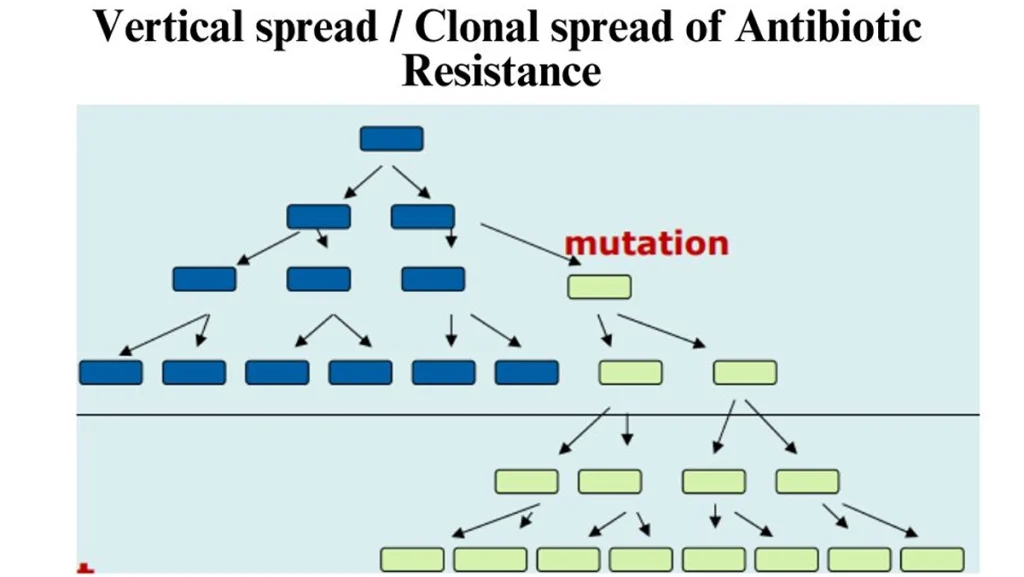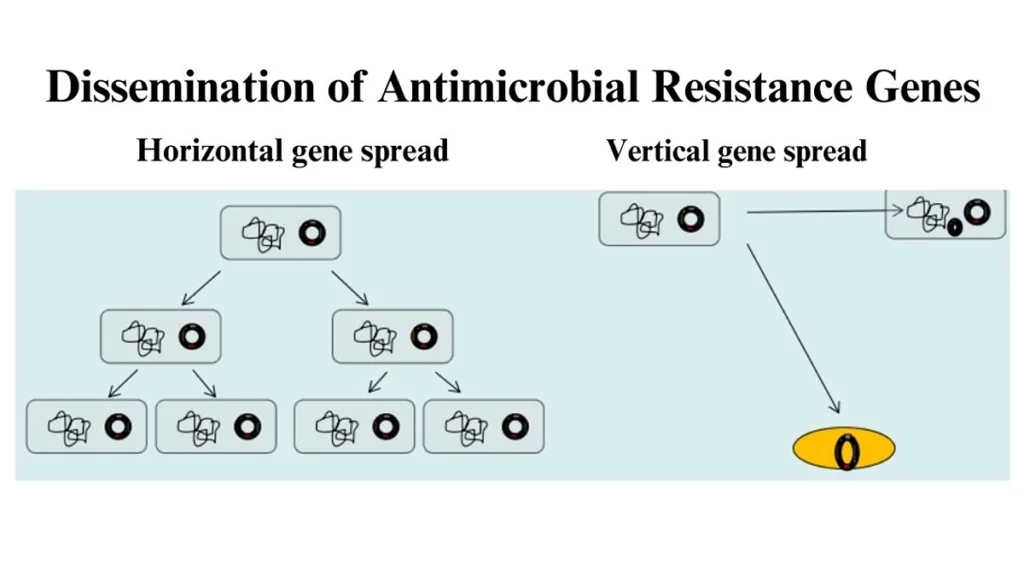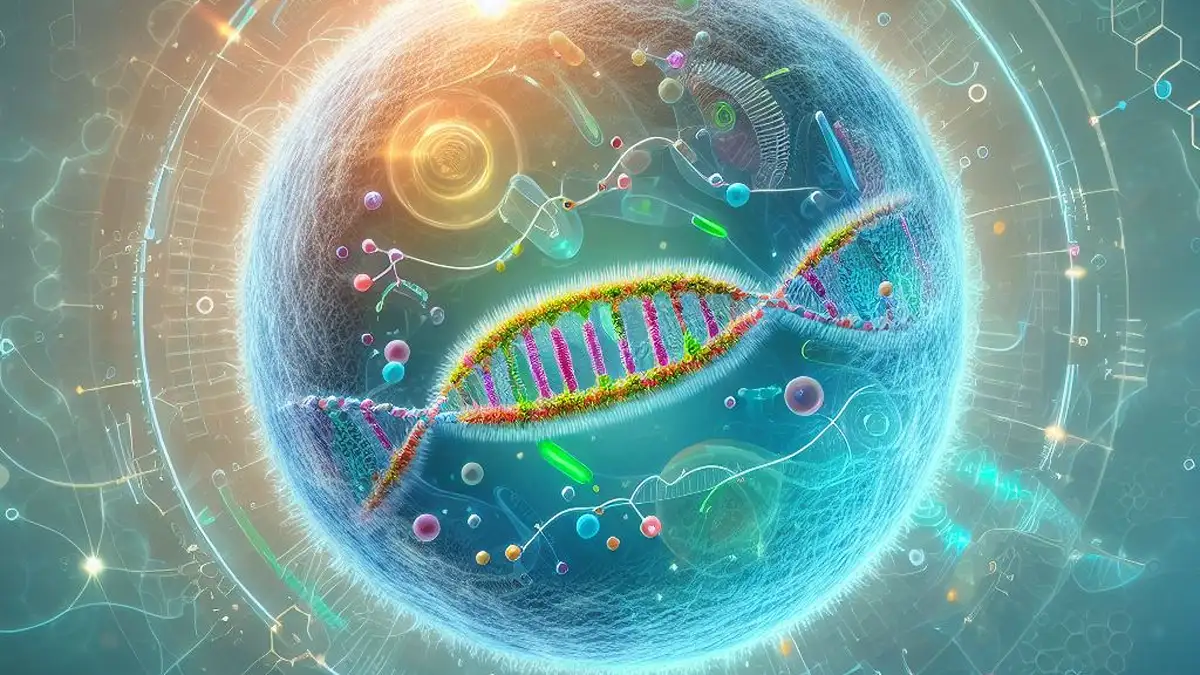
How Antimicrobial Resistance Spread and Emerge?
How antimicrobial resistance spread? Antimicrobial resistance is a phenomenon that emerges and spreads through a complex process or antimicrobial resistance mechanisms which involves
- Genetic adaptations include
- Selection pressure
- Overuse and misuse of antimicrobials
- Transfer between different reservoirs or host species
Basically emergence of antimicrobial resistance is a natural process and antimicrobial resistance mechanisms are already present in bacteria genetically. However, human activities for example overuse and misuse of antimicrobials can accelerate AMR development and aggravate the consequences.
What is Mechanism of Antimicrobial Resistance Spread ?
How AMR spreads and disseminate? Antimicrobial resistance which emerge due to genetic modification under selection pressure mainly disseminate through two basic mechanisms including
Both mechanism of dissemination play crucial role spread and evolution of antibiotic resistance genes in bacterial populations. It is important to understand both processes to mitigate the emergence and dissemination of antibiotic resistance.
Vertical spread / Clonal spread of Antibiotic Resistance Genes
So, vertical spread of AMR genes is the transmission of antibiotic resistance genes from one generation to the next within a bacterial lineage or population through replication of inherent genetic material occurring during the process of reproduction and contribute in how antimicrobial resistance spread?

The key features of vertical or clonal spread include
Reproduction and Inheritance:
As evident by research, bacteria reproduce asexually through binary fission while during this replication process, the genetic material carrying antibiotic resistance genes replicates and transfer genes to the daughter cell to ensures the persistence and propagation of resistance genes within a clonal lineage As in intrinsic antimicrobial resistance mechanisms e.g. point mutations
Chromosomal Integration:
On the contrary, antibiotic resistance genes integrate in bacterial chromosome or genome in acquired through spontaneous mutations or genetic recombination events. It also contribute in how antimicrobial resistance spread?
Mutation and Selection:
Antimicrobial resistance mechanisms resulting in new mutations occurring in bacterial genome develop novel antibiotic resistant genes or traits resulting in selective advantage such as increased resistance against antibiotics. The selection pressure exerted by persistent use of antibiotics causes selective enrichment and persistence of resistant bacterial strains which carry beneficial mutations. It has major contribution in how antimicrobial resistance spread?
Limited Genetic Diversity:
However, Vertical transmission preserves genetic integrity and stability of bacterial lineages resulting in limited genetic diversity within bacterial population and can be studied epidemiology and evolution of antibiotic resistance genes bacterial lineage.
Horizontal Spread
While discussing antimicrobial resistance mechanisms, Horizontal gene transfer , has major role in how antimicrobial resistance spread? In horizontal gene transfer antibiotic resistance, spread of DNA or antibiotic resistance genes among inter bacterial species which are not genetically related by descent occur by using various mechanisms. Horizontal gene transfer, antimicrobial resistance mechanisms, can spread single gene or multiple genes among bacterial population through mobile genetic elements.
As Horizontal gene transfer may introduce new traits in bacterial genome therefore, it is considered very common mechanism in bacteria to confer antibiotic resistance. Due to its role in how antimicrobial resistance spread antibiotic resistance, this mechanism has attained special attention to understand the mechanisms and consequences of this process.

What are Mobile Genetic Elements?
Mobile genetic elements (MGEs) are segments of DNA that have the ability to move within the genome of an organism or transfer between different organisms. MGEs play a significant role in the evolution and diversification of genomes and they are responsible for widespread dissemination of antimicrobial resistance determinants . They may possess multiple antimicrobial resistance genes and contribute in multidrug resistance and co-selection
What are Plasmids?
Plasmids are small, circular DNA molecules that exist independently of the chromosomal DNA in bacteria. Plasmids carry accessory genes, including antimicrobial resistance genes, and they can be transferred between bacterial cells (Inter/Intra bacterial species) through horizontal gene transfer mechanisms e.g. conjugation.
What are Transposons?
Also known as “jumping genes,” are segments of DNA that can move within a genome. They have the ability to cut and paste or copy and paste themselves into different genomic locations. They carry antimicrobial resistance genes and their movement across genome can cause genetic rearrangements contributing to spread of antimicrobial resistance.T ransposons can carry multiple antimicrobial resistance genes and they can also move freely from chromosome to plasmid and vice versa
What are Insertion sequences (IS elements)?
These are small DNA segments which can move within a genome by a cut-and-paste mechanism. They often carry genes encoding enzymes that facilitate their transposition. Insertion sequences do not carry antimicrobial resistance genes themselves but contribute antibiotic resistance spread by facilitation in the movement of nearby resistance genes.
What are Gene Cassettes?
Gene cassettes are discrete segments of DNA that can be incorporated into specific sites within mobile genetic elements, such as integrons. Gene cassettes consist of a promoter region, an open reading frame (ORF) encoding a functional gene or a gene fragment, and a recombination site that allows for their insertion and excision from the genetic element.
What are Integrons ?
Integrons are mobile genetic elements that can capture and express gene cassettes containing various functional genes, including antimicrobial resistance genes (mobile gene cassette). They are often found in bacteria and can play a role in the acquisition and dissemination of resistance genes. Integrons may carry single or group of antimicrobial resistance genes for example genes encoding beta-lactamases, aminoglycoside-modifying enzymes sulfonamides and/or trimethroprim resistance and these genes may be be plasmid-mediated or chromosomal.

How Antimicrobial Resistance Spread can be Controlled?
Antimicrobial resistance can be addressed with comprehensive approach which includes
- Prudent antimicrobial use
- Stricy compliance with infection prevention and control measures
- Surveillance systems to monitor resistance patterns, and
- New drug discovery to treat resistant bacteria.
